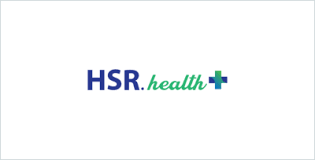
04 May HSR.health Uses Its GeoHealth Platform To Support Global COVID Pandemic Response
MedicalResearch.com Interview with:

Dr. Peruvemba
Ramani “Ram” Peruvemba, MD, FASA
Co-founder and CMO of HSR.health
MedicalResearch.com: Would you tell us about your background?
Response: I am a dual-board certified Anesthesiologist and Pain Management physician, currently serving as the co-founder and CMO of HSR.health. I am a Health IT expert and well-versed in the clinical, regulatory, and policy issues surrounding healthcare. I leverage my expertise, professional networks, and insights to HSR.health to bring health risk information to industry.
As a clinician, I formerly served as Vice Chairman of the board for the largest anesthesia provider in Maryland and led them through a private equity transaction that helped elevate our group onto a national platform.
I have also served on the advisory boards of QSSI corp, a Health IT firm involved in the construction of Healthcare.gov and ultimately sold to Optum, as well as Welldoc, a digital health leader that developed the only FDA approved digital health solution for the management of diabetes. Through my role on the Maryland Health Services Cost Review Commissions Advisory Council, I play a key role in the development and implementation of the unique value based hospital payment system, the Total Cost of Care Model, in conjunction with CMS and CMMI.
I currently serve on the board of the Maryland State Medical Society, MedChi, as chairman of the medical policy council, and am the President of the Maryland Society of Anesthesiologists.
Most recently, I’m proud to share that I was named a 2021 Top 100 Healthcare Innovator for my leadership in HSR.health‘s efforts supporting COVID-19 pandemic response globally.
MedicalResearch.com: How did you become interested in health-focused geospatial data analytics?
Response: By recognizing its power to improve healthcare. GIS systems, as they deal with location-based data and support advanced AI-powered analytics, can play an essential role in tracking disease outbreaks, predicting hot zones, and understanding and responding to supply chain disruptions. For example, by tracking mobility and foot traffic, our GeoHealth Platform can provide insight in tracking and mitigating the spread of an infectious disease.
And given the “geospatial” in GIS, our Platform can resolve this information at the county, zip code, and other geographic levels in the U.S. and globally. This enables deployment of medical resources in advance of a virus, rather than chasing the virus—aiding first responders in saving lives. These insights can significantly improve the ability to halt the spread of a contagion as well as treat the infected.
MedicalResearch.com: What is the mission of HSR.health? Would you discuss the goals and uses for the GeoHealth Platform?
Response: Our mission is to “wield technology’s wonders to raise healthcare’s quality and lower its cost.”
President Obama made this statement in his first inaugural address. In all of the discussion around healthcare reform then and since, there’s been a lot of debate about what should be done but little to no debate on this: that technology hasn’t had the impact in healthcare that it has had in essentially every other industry in terms of lowering overall costs, democratising data, and improve operational efficiency.
We see the GeoHealth Platform and its ability to visualize data and enable AI-based advanced risk analytics on geocoded health, social, and environmental data is key to achieving this.
MedicalResearch.com: How does the Platform support the COVID-19 pandemic response?

Response: There really are a tremendous number of ways. This is in part because of the breadth of capabilities we have built that the GeoHealth Platform supports – and also because of the great diversity of needs that become apparent in a pandemic. I’ve provided some examples below tied to our aid in global response.
Transmission Risk Index: To track spread and predict future hotspots of COVID-19
Mortality Risk Index: To identify those at high risk of mortality and critical cases, including geographic population data.
Medical Device Index: To identify number and location of medical devices, like ventilators, required to respond and treat patients.
Medical Supply Index: To identify the number, location, and schedule of medical supplies like PPE required to respond and treat patients.
Hospitalization Risk Index: To identify the number of hospitalizations to be expected due to a health disaster allowing health systems to plan staffing & resourcing requirements.
Testing Needs Index: To identify the level of testing required to effectively track and help control the spread of COVID-19.
Vaccine Needs Index: To identify the number and location of vaccine doses to have the greatest impact on reducing community risk from COVID-19.
Contact Tracing: A big challenge in contract tracing efforts globally is that individuals simply don’t want to share the details of where and with whom they’ve been over the past two weeks with anyone – even to public health authorities. We address this challenge of individual privacy throughout our work by leveraging population level data and analytics. For contact tracing, we are able to take population level mobility, transportation, and foot traffic, along with data on points of interest – places where people may congregate, such as retail establishments and restaurants – and identify both the risk of disease transmission in those locations as well as a strong indication of where transmission occurred. This can help both in tracking and responding to the current pandemic, as well as guide future lockdown and quarantine efforts in, God forbid, future pandemics. In this way, we protect individual privacy entirely.
Advanced Research into COVID variants: Studying the impact of disparate rates of vaccine administration on health equity; and the relationship between COVID & HIV in Africa.
Secondary Bacterial Index (SBI): One of the things often seen during outbreaks of emerging diseases and pandemics are a rise in secondary bacterial infection. We are seeing that now with hospitalized COVID patients. One of the positive aspects of this – if we can call patients contracting any infection as positive – is that such infections can be identified and tracked, and doing so is a part of our Pandemic Early Warning & Response Platform and its capabilities.
In addition, through this index we may also be able to reduce the overutilization of antibiotics and stem the rise of antibiotic resistant bacteria. The SBI assesses the risk of secondary bacterial infection for COVID-19 patients (currently) and will expand to the general population. We can identify which COVID-19 patients are at risk of secondary bacterial infection today, and with clinical data from health systems (providers), will be able to specify which bacterial infection they are most at risk to.
This will form essentially a dynamic Antibiogram that can help hospitals use a specific antibiotic versus broad spectrum – reducing overutilization and reducing the growth of antibiotic resistant bacteria.
MedicalResearch.com: What other industry-specific models are you developing?
Response: One of the lessons we’ve learned and relearned over 2020 is that health impacts every aspect of our lives. The work we do in health risk analytics to support pandemic response ultimately aids every industry, but some are more impacted than others.
Thus, we are building risk indices tailored to the needs of specific industries. For example, in Aviation, we’ve developed a Flight Safety Index to assess the risk of disease transmission on a per-flight, per-aircraft basis. Overall, our approach helps the aviation industry lower the potential exposure passengers and crew face throughout the flying experience from airport-to-airport. It goes a long way towards restoring passenger confidence in air travel.
For school systems, we have developed an award-winning School Safety Index—an AI-based solution for identifying the risk of disease transmission in a school environment to mitigate that risk and restore confidence in the classroom. Using this index, schools can develop cost-effective mitigation strategies to return students and teachers safely to live, in-person education. The index can also be leveraged to redesign existing and design and build new “pandemic proof” school buildings and classrooms. The School Safety Index has been recognized by the University of Maryland School of Public Health as an effective means of ensuring the safe resumption of live in-person education.
For employers, our Office Safety Index (OSI) is a sophisticated AI-based solution for identifying the risk of disease transmission in restaurants, malls and other retail establishments, offices or other workplace environments. Using the OSI, property managers, owners and employers can develop cost-effective mitigation strategies to return employees safely to the office and restore confidence in the workplace. The OSI can also be leveraged by commercial developers to design and build “pandemic proof” buildings. Our ability to track disease transmission risk can be instrumental in transforming existing and constructing new buildings that reduce that risk.
For the Financial Services sector, our Economic Risk Indices enable insights into future economic activity at different aggregate levels based on health risks. Leveraging our proprietary risk indices, we are able to quantify the impact of social and environmental factors on population health, and correlate that impact with key market indicators.
Our Economic Risk Indices provide insights that allow industry to assess health risks to economic conditions at global, national, and local levels; while quantifying the impact and benefits of health mitigations at community level.
MedicalResearch.com: What else would you like to add?
Response: During a recent White House Office of Public Engagement Briefing on U.S. Support to India’s Covid19 Crisis”, U.S. Surgeon General Vivek Murthy, MD referenced that having a pandemic early warning and response system is the most critical thing for the future health posture of mankind.
Thing is, we have such a Platform. Since the early days of Covid-19 response, we have been working towards a new, digital early warning system. Based on our support of FEMA, several states, the World Health Organization and others, we’ve learned how to identify the early signals of human-to-human transmission of infectious disease. We’ve used these insights to design the Platform and have begun to build it.
So, what’s next? We are now working diligently to raise a Series A round of funding to accelerate both our own growth and to advance product development.
To learn more about our Blockchain-enabled, AI-powered, geospatial Pandemic Early Warning & Response Platform, please contact Impact@HSR.health.
JOIN OUR EMAIL LIST
[mailpoet_form id="5"]We respect your privacy and will never share your details.
[last-modified]
The information on MedicalResearch.com is provided for educational purposes only, and is in no way intended to diagnose, cure, or treat any medical or other condition. Always seek the advice of your physician or other qualified health and ask your doctor any questions you may have regarding a medical condition. In addition to all other limitations and disclaimers in this agreement, service provider and its third party providers disclaim any liability or loss in connection with the content provided on this website.
Last Updated on May 4, 2021 by Marie Benz MD FAAD
